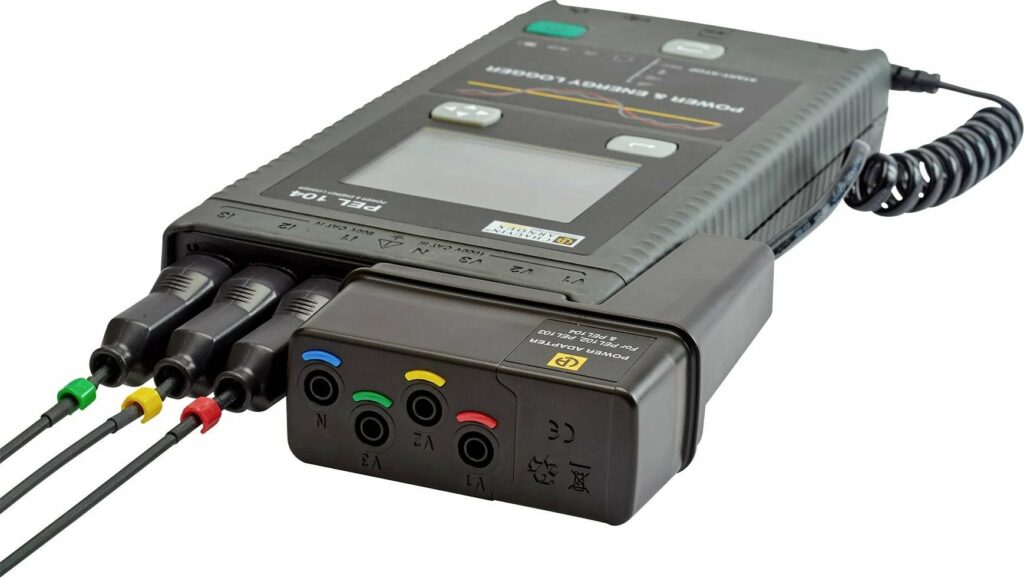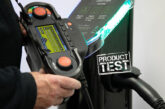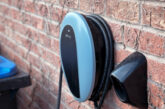
Jeff Jones from The Technical Department is back in the hot-seat this month as he reviews the Chauvin Arnoux PEL 104 Power Energy Logger.
As a company, The Technical Department has been at the forefront of sustainable power delivery in the live event industry for many years.
We regularly provide power and energy electrical surveys to the live event industry, enabling our clients to make decisions on the type, quantity and size of generator they require for their event, saving them fuel and making their event as sustainable as possible.
Over the years, we’ve used Chauvin Arnoux power analysers and energy monitors to help us achieve this with the products proving to be reliable and accurate at recording data in some very remote, unforgiving locations globally, enabling us to provide very detailed power and energy survey reports.
One product that I hadn’t tried before, but had heard great things about, was the PEL 104 Power Energy Logger, so I was really keen to get to grips with the functionality of the instrument upon being given the opportunity to review it for this magazine.
Compact and comfortable
Firstly, the PEL 104 Power Energy Logger is a compact size for a three-phase instrument, which is great when deploying in locations with limited space. It also has a minimal screen layout and control buttons along with a rubberised case enclosing the unit and allowing a comfortable grip.
The instrument comes included with a generously sized quality canvas bag that easily stores all the various crocodile clips and CT coils required for the monitoring set-up.
A very innovative design feature is the magnets on the back of the unit which allow you to stick it to the distribution board you’re monitoring or any metallic surface. Also, the voltage probes come on a magnetic reel, which I’ve not seen before, allowing you to deploy just enough leads for your voltage set-up.
As we all know, it pays to keep things neat when deploying this type of equipment. If you’re leaving the unit at a location remotely for a while, it is essential that your set-up is tidy so no disruption to the leads can occur after you’ve left, negatively affecting the monitoring.
The CT coils are the Rogowski type, so they’re flexible and easy to retrofit to most installations without having to disturb the wiring too much in the distribution board. Some electrical installations can be very tricky to monitor due to the fixed rigid layout of the conductors or busbar, so the flexible coils make attaching the CTs nice and easy.
Also included is a plug-in power adapter which self-powers the PEL 104 off your voltage monitoring connections, meaning no external power supply is required for the unit. This again reduces connected cables and streamlines your monitoring set-up.
I found the PEL 104 extremely easy to set up and get to grips with. Initially I only had my mobile to hand so decided to connect wirelessly via Bluetooth. After downloading the PEL mobile App I was quickly able to connect via Bluetooth and set up the unit for my first scheduled recording.
I should say that Chauvin Arnoux has developed an App that really compliments the instrument and allows you to effectively set everything up for your first recording session without requiring a laptop. This is great, as it allows you to set everything up in the field with your mobile, really cutting down on the amount of kit you need to carry to the job site.
The layout of the App is excellent and allowed me to quickly adjust all the required settings on the PEL 104 and begin my scheduled recording. Simply swiping right on the App gives you several screens of real time data such as a phasor diagram, current voltage frequency as well as KW, KVAR and KVA. One thing I found particularly interesting was viewing the phasor diagram in real time and seeing how it was immediately affected by the type of connected load, linear or nonlinear.
Connectivity options
I was particularly interested to see how straightforward the rest of the connectivity options were. All the standard connection options are available via the IRD server. There is an ethernet port for the hardwired option, which is great where interference can be a problem, and a sim card slot for mobile data. There is also an option to connect to Wi-Fi.
The PEL transfer software on my laptop was easy to navigate with a familiar layout that gives you all the options provided by the mobile App, plus more. There were a couple of configuration settings that certainly require a special mention, with one of the options – ‘alarm conditions’ – proving very worthwhile.
This option allows the instrument to contact you via email if the PEL 104 records anything out of the ordinary with the pre-programmed parameters you’ve set. Essentially you can set the PEL 104 up to email you when any preset electrical thresholds, such as current, voltage and frequency, are triggered. I used this option when remotely monitoring a generator and had it set up to notify me when the voltage dipped below a certain value.
The range of options this feature allows you to explore is particularly useful if you’re trying to pinpoint a specific issue with an electrical system or perhaps you just want it to email you when the current demand has reached a particular limit.
I first deployed the PEL 104 at an event where I was looking to remotely survey the electrical demand of a temporary kitchen. These kitchen set-ups have a very high-power demand at specific times of the day. I first calculated the total power demand, allowing for diversity from the electrical specifications of the catering equipment. Based on this information I then set a current threshold on the PEL 104 using ‘alarm conditions’ to notify me via email when the current demand reached my preset limit.
Useful comparison
Another noteworthy feature is the L452 connection. This requires an additional unit from Chauvin Arnoux which allows you to connect other monitoring items into your system such as temperature, humidity and air speed. I can see this being very useful for connecting and remotely monitoring a generator’s fuel supply at the same time as the electrical statistics, giving a useful comparison of the two.
The PEL 104 can also record DC current with a different set of CT coils that are an optional extra. This is a feature I’d have liked to explore more, especially when monitoring hybrid generators with both battery and combustion engines combined.
After putting the unit through its paces, I’d highly recommend that other professionals take a look at the PEL 104. Its wireless remote connectivity options make it so useful when remotely surveying electrical systems and it is extremely simple to set up and use. Any electrician working on a three-phase or single-phase system would find this product very useful for remote monitoring and surveying.
Get more details on the Chauvin Arnoux PEL 104 Power Energy Logger here










